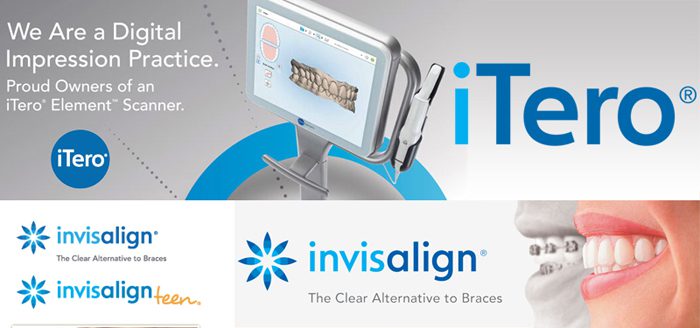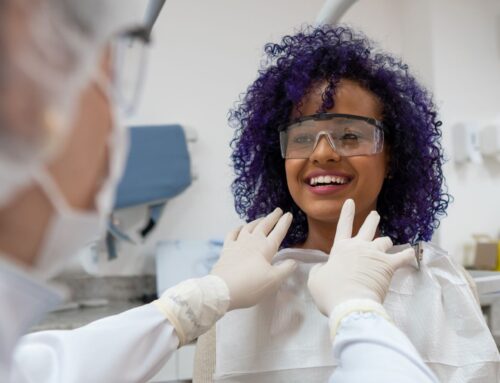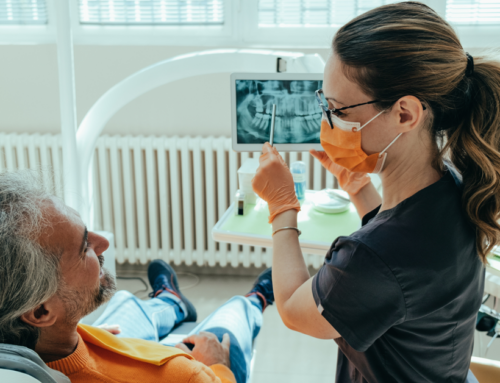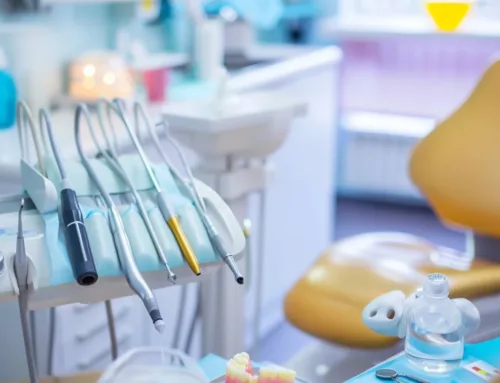Five New Developments in Orthodontic Treatments
What’s New in Braces & Orthodontics?
With respect to dentistry and orthodontics, things change fast and for good reason. New developments are always hitting the market and evolving treatments. This means that patients can reap the rewards from more advanced technologies that provide safer and quicker procedures that yield better results.
Braces have come a long way since cumbersome headgear with wires poking out in every direction was all the rage. Technologies, tools and software are constantly being improved upon and procedures are being perfected to make sure the in-chair experience is the best it can be.
Let’s start by painting a clear portrait of what traditional braces look like. By understanding the “normal” state of orthodontics, you can appreciate how significant these developments are. Then, of course, we’ll present the five trends you need to learn about.
Keeping track of every trend and development is hard work so we hope you use this article as a resource to guide you toward the best decision for your teeth and gums.
Orthodontic Developments
Since the 18th century, orthodontic practices have been in wide use even though they were rather primitive. Over the last couple of centuries, these treatments—with braces as its crowning jewel—have come a long way.
Braces have always been the best way to correct crooked teeth. They are proven to be a good treatment for even the most extreme cases. Braces work because they move teeth in small increments into a final position determined by your orthodontist.
Traditionally, braces were made of metal because of cost and durability. Incidentally, this caused them to be heavy and irksome to wear. Eating, drinking and sleeping were all complicated by braces, not to mention they could do a number on one’s confidence and social and professional lives.
Over the decades, braces have gone through several iterations. Believe it or not, they were once made of gold. This eventually led to ceramic braces, currently still very popular, which were less noticeable from a distance. Years later, this treatment and procedure experienced a true revolution with clear and removable aligners, allowing people to eat and drink whatever they want without disrupting treatment.
Improving Orthodontic Dentistry
Orthodontic treatments are about so much more than just improving a smile. While there is a distinct cosmetic element, it’s about oral health and ensuring a patient’s mouth, including teeth and gums, are contributing to their overall wellbeing.
By improving on the materials used and the implementation procedures, patients not only receive better care but a more comfortable experience and greater assurance that whatever orthodontic treatment they need will not impact other aspects of their health, including their emotional and mental health.
We believe in Holistic Dentistry, which considers a patient in their entirety and biocompatibility so that dangerous materials never encounter one’s mouth.
The 6 Latest Developments
- The iTero Element
The iTero Element is the most advanced scanner on the market today. It allows dental professionals unprecedented insight into a patient’s oral health and to openly discuss treatment options.
Patients love this scanner as it provides a comfortable in-chair experience, and allows them to visually understand their oral issues and what results could look like. It demystifies the pain they might be experiencing and quells concerns about the recommended course of action.
This is an interesting development because it’s not only cutting-edge, but it creates a better and more open relationship between dental professional and patient through visualization. Being able to see exactly what the end result of your treatment will be, BEFORE you make any commitment, eliminates the uncertainty. It is a resource to help patients make crucial health decisions that will impact their teeth, gums, jaw and overall health.
Its features and benefits include:
- 20x faster than previous model and can capture 6,000 frames per second.
- TimeLapse Technology to note and review a patient’s oral history.
- Outcome Simulator to visualize the results of an Invisalign treatment.
- Real-time 3-D Visualization
- Vibrant Colour Scanning
This is the scanner you want your orthodontist or dentist to be using. It shows they’ve invested in offering the very best to their patient base.
- 3-D Imaging
X-rays play a key role in helping a dentist or orthodontist determine what oral issues a patient might be experiencing and what treatment could provide the best solution. Despite their importance, dental X-rays used to be somewhat limiting. Essentially, they were 2-D images like photographs, and like photographs they could be unclear and provide only one angle.
One of the newest orthodontic developments is 3-D imaging using cone-beam computed tomography (CBCT). In addition to 3-D images, CBCT provides measurements that are accurate to a tee, insight into airway abnormalities, identifies and gauges asymmetry and is a trusted assessment tool for periodontal structures and endodontic issues. This innovation doesn’t even require a larger dose of radiation to work.
CBCT allows orthodontists to view and manipulate detailed 3-D images of a patient’s teeth, skull, jaw and oral bone structure. The result is a more precise diagnosis, an ability to pinpoint specific oral issues and to devise a treatment plan with less ambiguity.
- Smile Design Software
Often ignored as a vital resource for orthodontists is software. Software helps streamline processes, manage the many parts of a practice and, with this latest development, customize a beautiful smile for patients.
Smile design software combines 3-D images and planning capabilities with dental impressions to show a patient the different smiles they can achieve based on what treatment they choose to undergo.
Basically, these software applications simulate smiles and build a customized plan. Additionally, it allows patients to engage with the process and provide guidance as to what results they hope to achieve.
There are several options:
These software applications should be used by every clinic to remove the guesswork from corrective or cosmetic procedures.
- OrthoPulse
OrthoPulse is a state-of-the-art device that employs low levels of near infra-red light energy. This stimulates the surrounding bone and enables teeth to move, resulting in a truncated treatment time for people with braces or aligners. Since having to wear anything on your teeth is such a commitment, OrthoPulse helps patients cross the finish line faster.
OrthoPulse is a self-treatment system that offers convenient sessions that only take 10 minutes a day. The science is based on clinically-proven and well-documented technology that has been in use for decades.
You don’t have to change your schedule even a bit to commit to OrthoPulse. You can perform treatments while relaxing at home.
- Ceramic Braces
Ceramic braces are very popular with teenagers and adults because they are designed to blend in with the colour of a patient’s teeth. The wires and brackets come in different shades to make finding a match easier.
Ceramic braces are as reliable as metal braces but they solve one enormous issue for patients. They aren’t noticeable from a distance and even up close look far more natural. Their drawback, though, is a lack of durability, which is why they are often used in conjunction with metal braces.
These are an especially great option for adults who worry that braces will upset their professional lives. They cause no speech disruption and you can enjoy a big open smile.
- Invisible Aligners
Recent developments have reduced the need for elastics to pressure teeth into place. Clear and removable aligners allow people to correct their teeth in a stealth manner.
With millions of wearers across the globe, Invisalign is the most popular system. These clear, comfortable and custom-made aligners are replaced every two weeks, moving the teeth slightly into position with each session.
Created with the use of 3-D computer imaging, these sleek aligners let patients enjoy food and drinks that are known to cause stains like strawberries, beets and red wine. One amazing feature of this orthodontic development is that they cut down on the number of adjustments, and overall appointments, compared to other braces.
These aligners are non-invasive. You can continue brushing and flossing while undergoing treatments.
Book your Appointment Today!
Orthodontic technologies and treatments are constantly evolving to create safer experiences and better results for patients. You need a clinic that adopts and offers the latest advancements and understands the role that innovation plays in providing oral health services.
At our Barrie clinic, we offer an array of cutting-edge and traditional dental and orthodontic services, including metal and ceramic braces, digital X-rays, dental crowns and tooth extractions to name a few.
To learn more about the latest trends in orthodontic treatments, contact Georgian Dental® today. We offer free, no obligation consultations.
Appointment Request
If you’re interested in any of our procedures, and would like to meet with one of our dentists to discuss options, costs and get additional information, complete this short form and we’ll give you a call to arrange for a no-obligation appointment at our Barrie clinic.










